Ham Radio
Over 17 years ago, a co-worker of mine at the Apple Store, Shane (later known as WQ3Y) started talking about getting an Amateur Radio License. He had long been fascinated by the idea, and suggested that perhaps a few of us could start a study / accountability group to make the process easier. It didn’t take much to sell me on the idea. As a technology nerd, I’m always on the lookout for new skills and knowledge that might eventually be useful, and understanding something about how the magic of radio worked seemed like a good idea in a world that was increasingly dominated by Wi-Fi, Bluetooth, and cellular networks.
I got a couple of books – one for the entry-level “Technician” license, and one for the next in the series, “General” – and began to study the material. I’m honestly not sure how long I studied, but Shane got his license in January of 2008, and a few months later, I felt like I was ready, too. On a Saturday in late June, I drove up to the studio of WDEL / WSTW north of Wilmington, DE to take my official test at a picnic table in the parking lot along with other hopeful hams.
The few minutes that it took for my paper test to be graded by the 3 volunteer examiners felt much longer. At last, one of them approached me, and gave a late smile. “Do you want to try for General? It doesn’t cost any extra.” That was his way of saying that I had passed. I thought about it for a moment – while I had looked over the General class book, I hadn’t really *studied* it like I had the Technician level material, but I thought it was worth the shot if they were willing to test me.
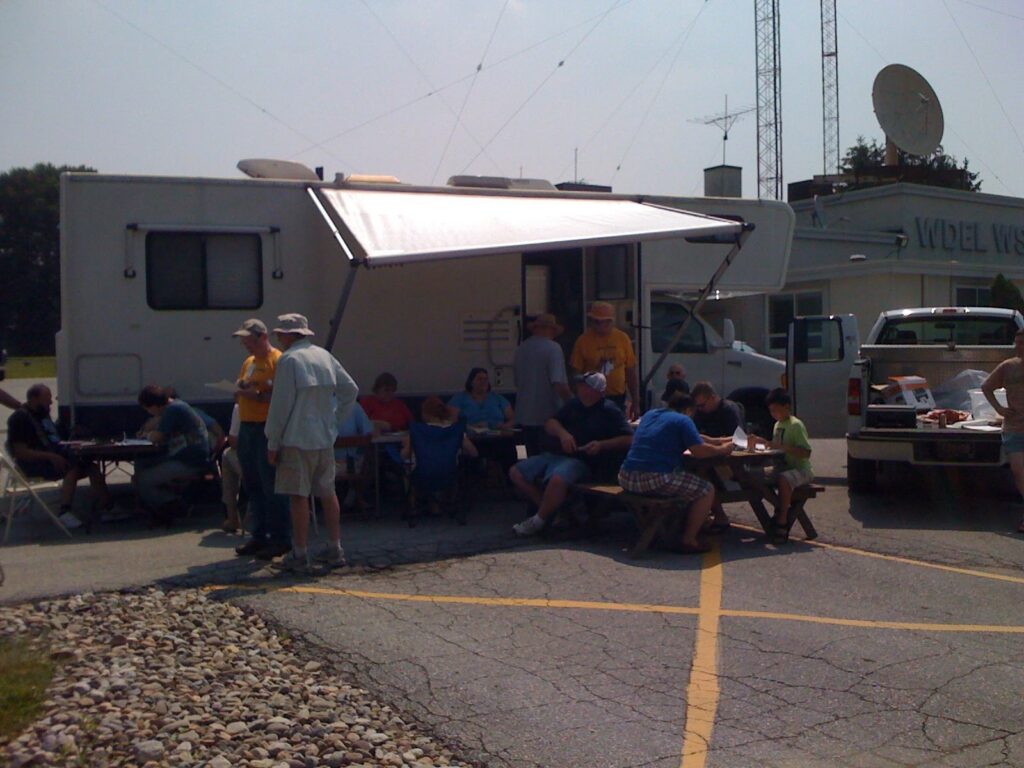
I took the second multiple-choice test and another anxious wait ensued. Once again, the same man walked back over to me. “Want to try for Extra?”
Now in those days, the highest-level “Extra” class license required a Morse code test. I knew there was no way that I could pass that. And I hadn’t ever considered looking at material as advanced as the Extra test was going to throw at me. I decided not to waste anyone’s time, and took my General class CSCE home.
After a few days, I got an email from the FCC that they had my paperwork and were looking for me to pay the $35 licensing fee. I promptly did, and on July 8, 2008, I was officially licensed as a General class Amateur Radio Operator with the callsign KB3RLM.
I’ll admit – I wasn’t as taken with the hobby at first as Shane was. I was more interested in the knowledge than the practical application. Shane got some radios and antennas for his house. He set up a VHF/UHF rig in his car and experimented with APRS, showing it off to me in the days before Apple’s FindMyFriends app was ever thought of. I thought that part of it was really cool, but I never did any of that. I didn’t buy any equipment at all. I learned about EchoLink – a way to participate in VHF & UHF repeaters over the Internet with a computer – and I signed up for that. I even played around with it a few times, but it always felt like I was cheating somehow. My license came up for renewal after 10 years, and I kept it current with the FCC for address changes and the like, but that was about it. Other things happened in life, and my interest waned.
Fast forward to the summer of 2025, and a short diversion.
My boys and I got a phone system set up at the house, as I mentioned in a previous post. What I didn’t mention was how I got those lovely Cisco phones in the first place. I had found a listing on Facebook Marketplace advertising FREE Cisco phones. A business up in the Philadelphia suburbs had recently removed their phone system and just wanted rid of the desk sets. I called to inquire about getting 5 of them for us to play with and the woman I spoke with sounded disappointed, “ONLY 5? I’ve got boxes of these things!” To make a long story short, I ended up coming home with close to 50 of them, and I’m happy to say that they all made their way to good, nerdy homes.
But before we could do that, we had to clean them up a bit. Isaac especially enjoyed doing this with me. One by one, we powered them up, updated their firmware, connected them to our phone system, and ran through a series of tests. As I poked around the Internet for information about the particular model we had (the venerable SPA525G2) I found out that they were popular on a service called Hamshack Hotline.
This was a really cool idea. It was a service using very similar server software to what we were, but offering it up to ham radio operators around the world for free. It was a way that you could have a secondary means of communication with your ham buddies, while also messing around with how VoIP worked. Since I had a license, I figured, why not try to fire it up on one of these phones? Literally the day after I decided to do this, Hamshack Hotline announced that they were shutting down. Running the service had become too cumbersome. Luckily, a similar (though smaller) service existed in Hams over IP. I immediately signed up for an account.
As I was digging out my license paperwork so that I could complete my application, Isaac was looking over my shoulder. “What’s this radio license thing all about?” He was instantly intrigued. We had a few conversations about it, and his interest only grew. I told him he’d have to learn enough about radio and electronics to pass a license test. It would take some work, but he was up for it. The prospect of learning some science was exciting for him, so we ordered a book and got deep into studying.
Now, there are easier ways to get on the radio if that’s what you want to do. There’s the Family Radio Service (FRS) and CB radio – neither of these requires any type of license, but they are channelized, use FM and AM, and are limited in power to 2 watts and 4 watts respectively. These restrictions really impact your communication options and range. The General Mobile Radio Service (GMRS) is very much like FRS, but with a higher 50 watt power limit. While this increases range, it’s also where the FCC starts to require a license, just without a test. Simply pay a fee and your entire family is covered for 10 years. All of these services require the use of store-bought radios that are approved by the FCC, and are generally pretty easy-to-use.
What makes amateur radio special is that our license requires us to pass a test (or several tests for the higher-level licenses). We have to demonstrate that we have at least some understanding of how all this stuff works. In exchange for that level of knowledge, we are given much more freedom. Ham radio is for tinkerers – part of our mission is to push the art and science of radio forward through experimentation. We are granted privileges on several frequency bands from shortwave all the way through high microwave without being channelized. We are allowed to operate with up to 1,500 watts of power. We can use FM, AM, SSB, Morse code, and loads of digital modes to communicate. And we can design and build our own radios and antenna systems without needing specific FCC approval. Just about the only restrictions we have are that we have to identify ourselves in our transmissions, and we can’t encrypt our communications – everything must be in the clear. And of course, we aren’t allowed to intentionally interfere with anyone else’s transmissions, and we’re expected to know enough to not accidentally interfere either.
One thing we have going for us is that there are so many helpful educational resources for prospective hams these days. Isaac and I not only dug into the book together, but we used the study materials and practice tests at HamStudy.org, and the videos on the Ham Radio Crash Course YouTube Channel. Over the course of a month, Isaac started to get more comfortable with the material, and started doing better on the online practice tests. When he was consistently passing them, I started to look for a way for him to do an official test.
Initially, I was looking for an in-person session just like how I had gotten my license. The ARRL even has a nice search function on their website that can be used to find one. Unfortunately, there weren’t all that many offered in Delaware this past summer, and the ones that were a little farther out didn’t work for our schedule. That’s when I found the WM7X Online Testing VE Team. They have available spots every day, and as long as you can get your computer on a Zoom session, you can do a proctored online test using the same ExamTools system Isaac had been practicing with. Seemed like a good option. We registered on a Thursday morning and Isaac was testing within the hour.
Since he is a kid, the VEs (Volunteer Examiners) allowed me to sit next to him, as long as I remained on camera and didn’t help him in any way. Isaac was definitely nervous to take the actual test, and I was nervous with him. I tried to keep track of how he was doing on the 35-question, multiple choice test in real-time, but I couldn’t tell what the result was going to be. Isaac answered all of the questions, and hit the “Submit” button at the bottom of the page. One of the VEs “graded” the test, and the result popped up on screen: he had PASSED!
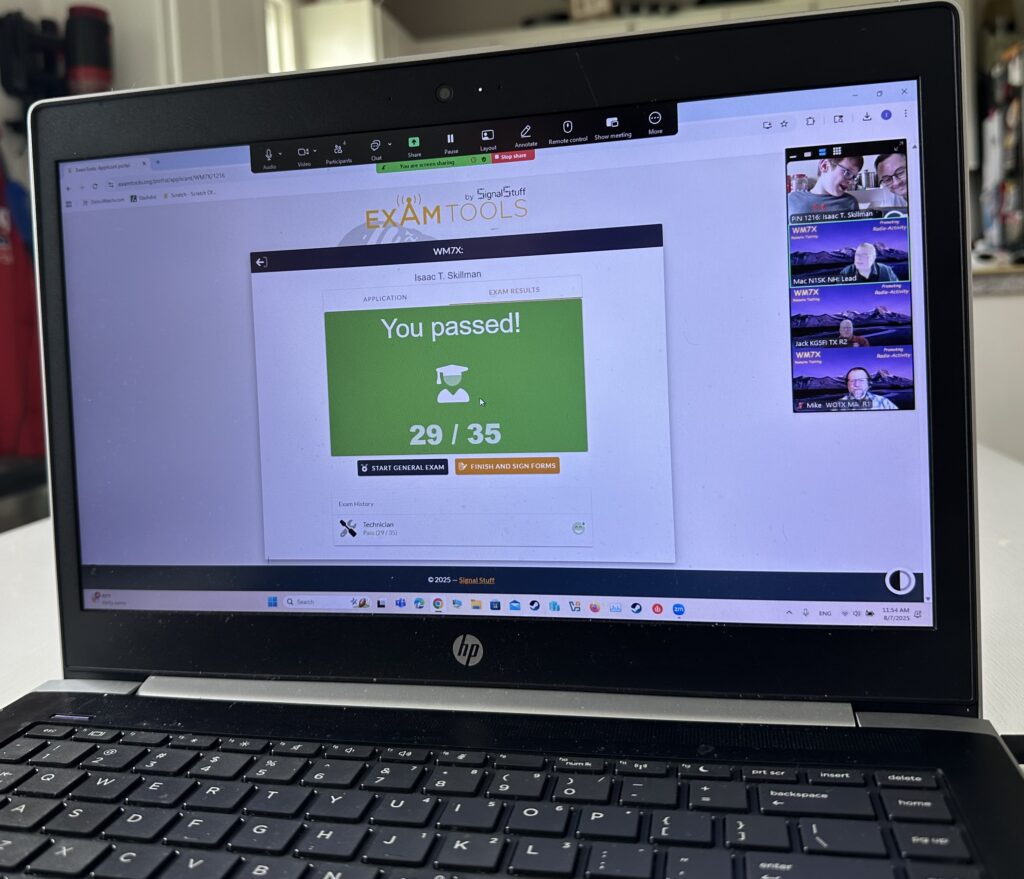
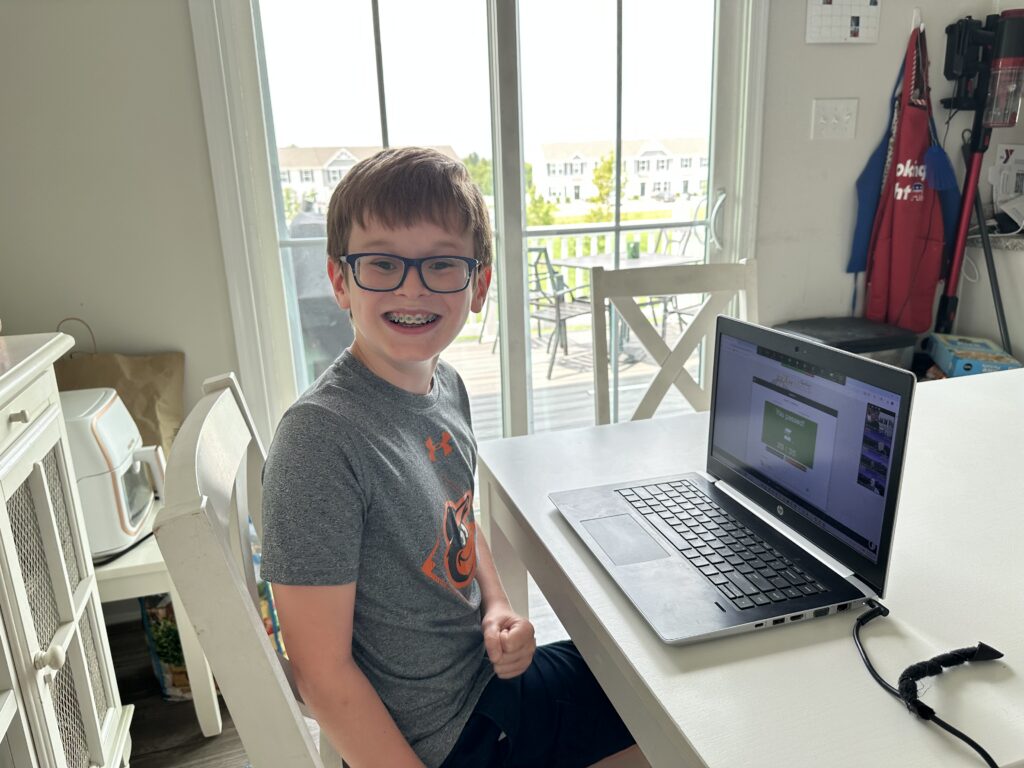
The next day, we got the registration fee email from the FCC, and by Saturday morning, Isaac had his license and callsign: KD3BSR. If you’d like to read about Isaac’s experience with getting his license, he wrote about it on his website.
We immediately set him up with his own EchoLink account, and he made his first contact on Sunday morning with N3RY on the W3VPR repeater – which has since become one of my favorite places to hang out.
We soon got a pair of TIDRADIO TD-H3 hand-held VHF/UHF radios, and have gotten familiar with a few of our local repeaters. Isaac really lights up when he gets to be involved in the conversation with the other guys. We’ve also been having fun with amateur radio signals from the International Space Station; decoding some of the SSTV (Slow Scan TeleVision) images they were transmitting in honor of World Space Week 2025.
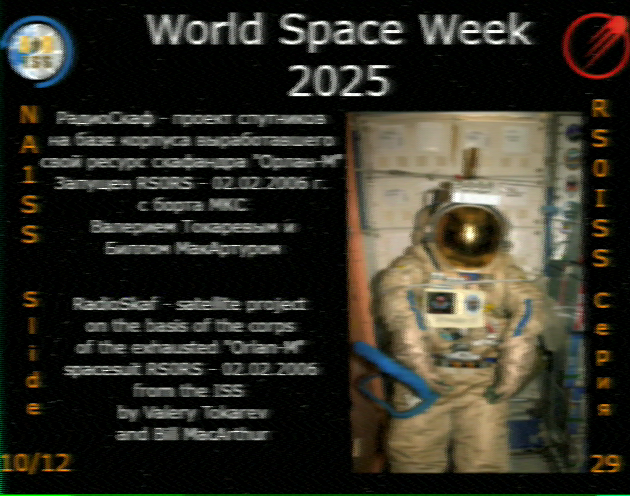
Seeing the excitement Isaac has about this technology – and also the sense of accomplishment he has in having earned his way into the ham radio club – has been really invigorating for me. He’s so proud of his Technician credential, and I’m proud of him for sticking with it to reach his goal.
His experience inspired me to jump back in myself. I’m happy to say that after Isaac passed, I picked up some study materials – including the EXCELLENT course on W4EEY’s YouTube channel – and was able to pass my Extra exam with WM7X acting as my VEs as well! In the coming months, I plan to build out an HF station that will enable us to make long-distance – and even worldwide contacts.
Isaac is already working on catching up. 🙂
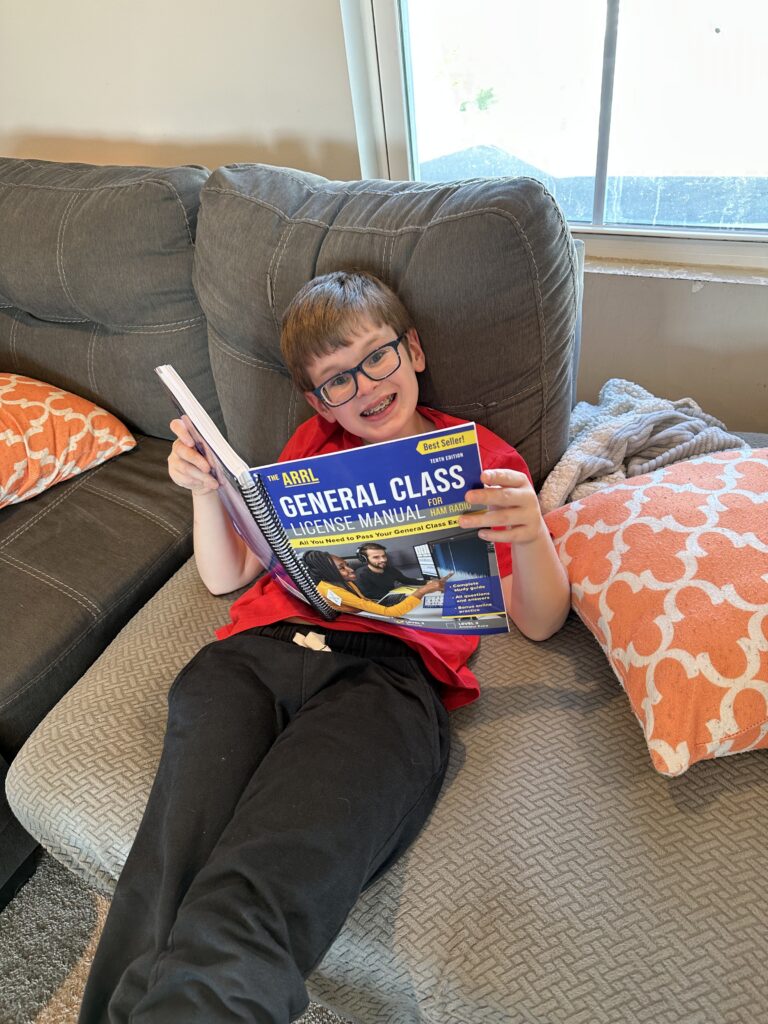
For now, I’ll end the post with the traditional ham farewell: “73!”